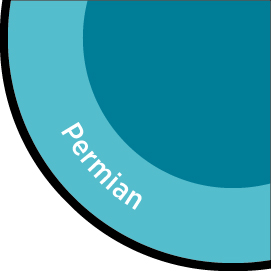
Snapping Synapsids Steal the Scene

Although plants were plentiful in the early Permian, around 290 million years ago, few big herbivores had evolved yet. Insects and other arthropods devoured living and dead plants. Tiny animals also ate decomposing matter and debris, returning nutrients to the soil. Otherwise, Earth remained largely a carnivore-eat-carnivore world. Synapsids composed a common and diverse group of carnivores and herbivores. Today, some synapsids, such as fierce-looking Dimetrodon, are sometimes mistaken for dinosaurs or called “mammal-like reptiles.” That’s incorrect, although they were indeed close mammal relatives. Large, swamp-dwelling amphibians, including Eryops, were also an important part of the Permian fauna.

The top predator of its time, the synapsid Dimetrodon grandis had a prominent sail along its back that may have helped it control its body temperature or attract mates.

Captorhinus aguti was an ancient Permian reptile with multiple rows of teeth.

The lower jaw of Dimetrodon grandis had knifelike serrated teeth.

Slow on land, the large-headed, stocky amphibian Eryops megacephalus probably hunted in water. Like an alligator, Eryops snatched prey with its broad snout and swallowed it whole.